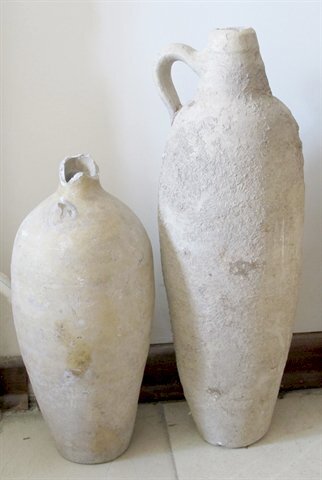Islamic-era relics discovered accidentally in Zanjan

TEHRAN – Two historical clay jars have recently been unearthed accidentally in a small village in Ijrud county, Zanjan province, a senior police official in charge of protecting cultural heritage has said.
The relics, dating back to the Islamic era, were discovered during a mosque construction project, Hossein-Ali Fazli explained on Thursday.
The locals soon informed authorities in charge of protecting the cultural heritage and the objects were handed over to the county’s cultural heritage department for further study and better preservation, the official added.
The term Islamic art not only describes the art created specifically in the service of the Muslim faith (for example, a mosque and its furnishings) but also characterizes the art and architecture historically produced in the lands ruled by Muslims, produced for Muslim patrons, or created by Muslim artists. As it is not only a religion but a way of life, Islam fostered the development of a distinctive culture with its own unique artistic language that is reflected in art and architecture throughout the Muslim world.
Zanjan is one of the cities founded by Sassanid King Ardashir I (180-242 CE). The province makes a base for wider explorations with the architectural wonder of Soltaniyeh, the subterranean delights of the Katale-Khor caves, colorful mountains, and the UNESCO-registered Takht-e Soleiman ruins nearby.
The first well-documented evidence of human habitation on the Iranian plateau is found from deposits from several excavated cave and rock-shelter sites in the Zagros Mountains, which dates back to Middle Paleolithic or Mousterian times (c. 100,000 BC).
ABU/MG
